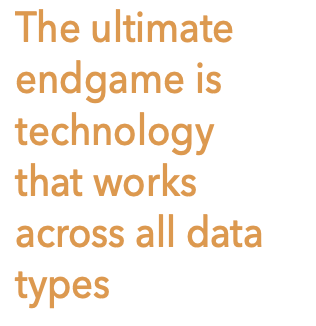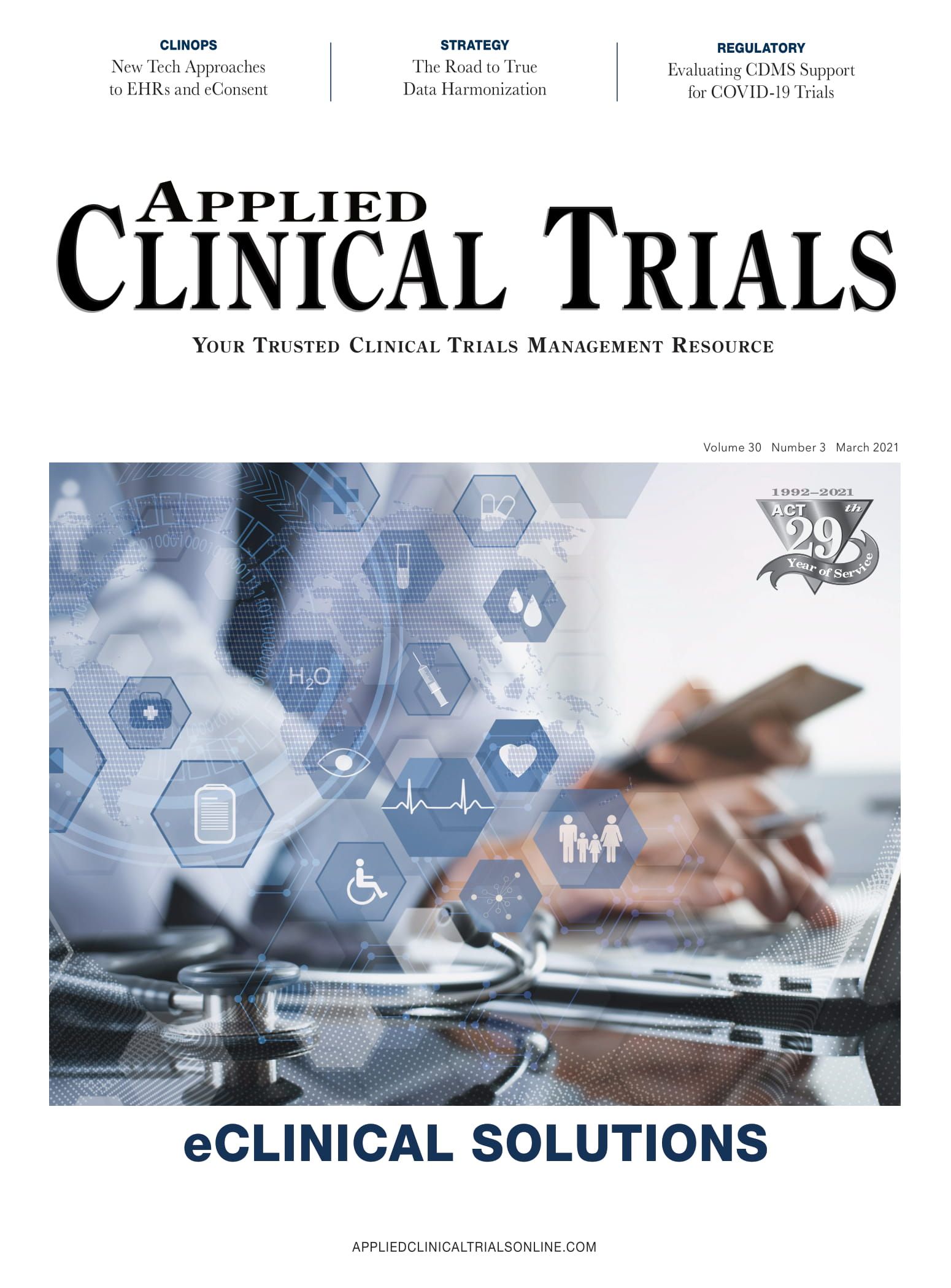Taking eClinical to the Next Level
New technological solutions for both patients and HCPs create a well-rounded eClinical approach

The eClinical market is on the rise. Research released in December 2020 estimated it would surpass $16.36b by 2027.1 But what do we understand by ‘eClinical’ and what innovations may this growth lead to and how will the industry make use of them?
eClinical is a term that has evolved over time and in definition, just as the industry has shifted and developed. What may have started as trial automation to streamline particular function areas has expanded, as the number of applications and disruptive technologies increase, bringing with it its own problems of duplication of data and redundancy in process.
As technologies integrate, improved usability is the operative characteristic for an efficient eClinical approach. And this not only to improve productivity, but also increase collaboration to the benefit of all. And central to this new approach is drawing from patients’ experiences and perspectives and developing next generation tools driven by patients.
At the same time, whilst decentralized/mobile trials focus on the patient, new tools to support the clinician, investigator, medical device companies, third party patient services and broader healthcare networks are emerging, to create a more accurate holistic view, and consolidate operations and efficiencies to develop faster therapeutic solutions.

The ultimate endgame is technology that works across all data types, protocols, sources, and formats for research and care coordination across all therapies which can:
- Empower patients
- Measure outcomes (for medical research)
- Manage disease (for care stakeholders)
So, what new developments are shaping today’s eClinical evolution?
Fully distributed EHRs
While some have tried with blockchain, there is a lack of fully distributed electronic health records (EHRs) where all participants can contribute–family doctors, specialists, hospitals, nurses, and the patient. There are a number of technical challenges to consider. Who can modify and access data? Is the data valid? What data is from a health professional and what data is from the patient? There are also questions about how EHR can be used for research beyond the obvious use for care.
However, there are solutions which can be utilized to allow EHRs to reach their full potential, such as marking every value in every data field with a unique ID, date-time stamp and source. Every piece of data is therefore uniquely identified and there can never be a ‘data conflict’, even if the data is modified at various places at the same time by multiple actors. This is critical for transparency and traceability. It also means everyone reading the health record will know where the data comes from. This allows data to be graded based on whether it has come from a patient, healthcare professional, consumer grade or medical grade devices or a laboratory system.
Advanced eConsent and re-consent
Informed consent and having the right processes in place to achieve it, has long been a challenge for clinical research and treatment. Recent guidance suggests the best way to meet the legal requirements of informed consent at treatment level is to develop a consistent practice of involving patients, even if that involvement may occasionally be limited.2 eConsent can help increase this involvement, as well as aiding understanding for clinical trial participants, for a number of reasons. It can be adapted and provided in different formats to meet diverse learning styles and levels of health literacy. eConsent also offers the opportunity to test and reinforce comprehension, widen the patient recruitment process, and reduce drop-out rates. Crucially, when well designed, it allows participants to give feedback quickly and easily on how consent materials could be improved. It must be very simple to use, very clear, with no hidden ‘small print’ and, with GDPR right to be forgotten, it must also enable consent to be removed. However, a scoping review published in May 20203 identified a need for researchers and commercial software vendors to create a unified approach to truly harness its potential.
Medication adherence
The costs of medicines non-adherence, both personal and economic, are well reported. Common reasons for unintentional non-adherence include difficulties recalling or understanding instructions or simply forgetting to take the medication. eClinical offers several solutions to this hugely costly issue. Apps can be used to distribute medicines schedules to all patients, reminders can be sent, and concomitant drugs can be managed using Personal Health Records (PHRs). If consent, data collection (questionnaires) and adherence can all be within the same tool, it can simplify life for the patient and keep them better engaged and informed. Where adherence modules feature in mobile systems, these can also capture intake information to feed a study.
Alerts to doctors
eClinical is about more than just helping patients manage their health and clinical trials. It can also help medical staff on a day-to-day basis. Simple alert systems can give data on biometrics including oxygen saturation, heart rate, respiratory rate, and temperature. Such deep integration between data collection and alerting allows for real time, or near real time alerting, which can be crucial.
There is, however, a need to ensure systems work with, and for, doctors rather than increasing their burden. A 2020 study examining perceived EHR usability as a predictor of task load and burnout among US physicians, found more favorable usability was associated with less workload. Researchers concluded improving EHR usability while decreasing task load has the potential to allow practicing physicians more working memory for medical decision making and patient communication.4 It is therefore vital clinicians are involved in development.
Patient engagement platforms (PEPs)
Incorporating PROs into platforms provides access to real-world data which, in the long-term, could have a significant impact on development decisions and improve care. Recent research has found both clinicians and patients find value in electronic real-time symptom reporting.5
But to maximize their potential, PEPs should be informed by a full personal health record (PHR) and PROs providing rich data. They must be able to handle multiple types of documents, including lab results, pictures, and specialist reports. For example, one ePRO tool for rheumatoid arthritis includes a sleep tracker, pedometer, the ability to upload pictures, documents, X-rays and lab results and questionnaires.
Power to the people: PHRs
The ‘data gold rush’ driving eClinical approaches can result in forced data sharing or lack of real comprehension regarding data collection.
By reversing the role completely and enabling patients to be in control of their data, empowering them to contribute to research and to the wider common good, is proving to be a great incentive and generating significant return.
A full personal health record stored on a smartphone, available for use even outside a trial for wider healthcare benefit, puts patient centricity at the next level.
Bridging the gap between research and care
The inclusion of a full PHR into advanced platforms is transforming trials and RWE studies as the range and scale of data is much greater. It is also of a much higher quality when acknowledging that up to 30% of hospital EHR data is wrong6 and easily rectifiable if patients can access and correct this.
Giving each patient a global view and access to all their health data which they can continually collect, share and control will bring a future of cheaper and faster research and more targeted treatments and therapy innovations.
Next generation mobile technologies and applications are revolutionizing the way we think about clinical research. But so much more can be done to better integrate all the relevant stakeholders across the health ecosystem, bringing real eClinical ‘intelligence’ and a holistic approach to clinical research, patient care, and therapeutic innovation.
References
- https://www.precedenceresearch.com/eclinical-solutions-market
- https://www.ncbi.nlm.nih.gov/pmc/articles/PMC3307558/
- https://www.ncbi.nlm.nih.gov/pmc/articles/PMC7233043/
- https://www.jmir.org/2020/12/e23382
- https://www.eurekalert.org/pub_releases/2020-10/ulcc-cpc103020.php
- https://ehrintelligence.com/news/diagnostic-medication-errors-rank-among-most-common-ehr-related-issues
Vincent Keunen, Founder and CEO, Andaman7
